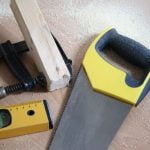Mortgage insurance can be a significant expense for homeowners, adding to the overall cost of owning a home. However, with strategic home improvements that increase your property’s value, you may have the opportunity to eliminate this financial burden. In this article, we will explore how to eliminate mortgage insurance after home improvement increases the value of your property.
Understanding the role of mortgage insurance is crucial in navigating the process of removing it. Mortgage insurance is typically required for borrowers who put down less than 20% when purchasing a home, providing protection for lenders in case of default. By increasing your home’s value through improvements, you may be able to reach that 20% equity threshold sooner than expected.
Determining the increased value of your home post-improvements is the first step in eliminating mortgage insurance. This involves assessing the market value of your property after renovations and comparing it to your original purchase price. Once you have a clear understanding of your home’s new value, you can explore options for removing mortgage insurance and potentially saving hundreds or even thousands of dollars annually.
Benefits of Increasing Your Home’s Value Through Improvements
Increasing your home’s value through improvements not only enhances your living environment but also has financial benefits, such as potentially eliminating mortgage insurance. By taking steps to upgrade and renovate your home, you can increase its overall worth, which can then allow you to reassess the need for mortgage insurance.
One key benefit of increasing your home’s value through improvements is the potential to eliminate mortgage insurance sooner. Mortgage insurance is typically required for homeowners who have less than 20% equity in their home, but as you increase your home’s value through improvements, you may reach that threshold more quickly. This means that by investing in upgrades like kitchen remodels, bathroom renovations, or adding additional living space, you can expedite the process of eliminating mortgage insurance.
To determine if your home improvement projects have increased your property value enough to eliminate mortgage insurance, you can start by obtaining a professional appraisal. An appraiser will evaluate the changes made to your home and provide an updated valuation report.
Additionally, researching comparable properties in your neighborhood that have undergone similar improvements can also give you an idea of how much your home may be worth post-renovations. By understanding the increased value of your home, you can better assess whether it’s time to explore options for removing mortgage insurance.
Steps to Determine Your Home’s Increased Value Post-Improvements
After completing home improvements, it’s essential to determine how much your property value has increased. This step is crucial in the process of eliminating mortgage insurance, as a higher home value can help you meet the criteria for removing this extra cost. Here are some steps on how to accurately determine your home’s increased value post-improvements:
1. Get a Professional Appraisal: Hiring a certified appraiser is one of the most reliable ways to assess your home’s current value after improvements. An appraiser will consider factors such as the quality of renovations, neighborhood trends, and market conditions to provide an accurate valuation.
2. Compare Similar Homes: Researching recent sales of similar homes in your area can also give you an idea of how much your property may have appreciated after improvements. Look for properties with similar features and upgrades to get a ballpark estimate of your home’s new value.
3. Use Online Valuation Tools: There are several online tools available that can help you estimate your home’s current worth based on recent sales data and market trends. While these tools may not be as precise as a professional appraisal, they can still provide a rough estimate to work with.
By taking these steps to determine your home’s increased value post-improvements, you’ll have a clearer picture of where you stand in terms of eliminating mortgage insurance. This information will be valuable when discussing options with your lender and deciding on the best course of action moving forward.
Options for Removing Mortgage Insurance After Home Improvements
Increasing your home’s value through improvements not only enhances your living space but can also play a significant role in eliminating mortgage insurance. By adding value to your property, you may reach a point where the loan-to-value (LTV) ratio falls below the threshold required for mortgage insurance. This reduction can save you hundreds or even thousands of dollars annually.
One way to determine your home’s increased value post-improvements is by getting a professional appraisal. An appraiser will assess the changes made to your property and provide an updated valuation. Another method is to research comparable homes in your area that have recently sold with similar improvements. Understanding the current market value of your home is crucial in calculating the LTV ratio and determining if it meets the requirements for removing mortgage insurance.
To eliminate mortgage insurance after home improvements increase the value, one option is refinancing your mortgage. By refinancing at a lower LTV ratio, you may be able to qualify for a loan without mortgage insurance.
Additionally, providing documentation of the improvements made to your home, such as receipts, permits, and before-and-after photos, can strengthen your case with the lender. It is essential to evaluate all costs associated with removing mortgage insurance through refinancing, including closing costs and potential interest rate adjustments.
| Benefits of Increasing Home Value | Options for Removing Mortgage Insurance |
|---|---|
| Enhances living space | Refinancing at a lower LTV ratio |
| Saves money on annual premiums | Providing documentation of improvements |
By negotiating with your lender and demonstrating how the increased value of your home reduces their risk, you may be able to persuade them to eliminate mortgage insurance early. Be prepared to make a strong case for why you should no longer be required to carry this additional cost.
Keep in mind that each lender has different policies regarding when and how mortgage insurance can be removed, so communication and negotiation skills are key in this process. Remember, taking proactive steps in recognizing how much equity you’ve built through improvements can lead to financial benefits in eliminating mortgage insurance sooner rather than later.
Refinancing Your Mortgage to Eliminate Mortgage Insurance
Refinancing your mortgage can be a strategic move to eliminate mortgage insurance after increasing your home’s value through improvements. By refinancing, you may be able to take advantage of the higher appraised value of your home, which can help you reduce or completely eliminate the need for mortgage insurance. However, it’s essential to carefully assess whether refinancing is the right option for you based on your financial situation and long-term goals.
One of the key benefits of refinancing to remove mortgage insurance is that it can lead to significant cost savings over time. By securing a new loan with a lower loan-to-value ratio due to the increased value of your home, you can potentially qualify for a loan without mortgage insurance or with reduced premiums. This could result in lower monthly payments and substantial savings over the life of your loan.
When considering refinancing as a means to eliminate mortgage insurance after home improvements increase the value of your property, it’s important to shop around and compare offers from different lenders. Be sure to consider factors such as interest rates, closing costs, and terms of the new loan. Additionally, consult with a financial advisor or mortgage expert to determine whether refinancing is the most financially sound decision based on your individual circumstances.
| Key Points | Information |
|---|---|
| Benefits of Refinancing | Lower monthly payments and potential long-term cost savings. |
| Considerations | Compare offers from different lenders and seek professional advice. |
Providing Documentation of Home Improvements to Lender
When it comes to eliminating mortgage insurance after making home improvements that increase your property’s value, providing documentation of those upgrades to your lender is crucial. This documentation serves as proof of the increased value of your home, which can help you in negotiating with your lender for the removal of mortgage insurance. Here are some steps on how to effectively provide documentation of home improvements to your lender:
- Keep records of all receipts and invoices related to the home improvements you have made. This includes materials purchased, labor costs, and any other expenses incurred during the renovation process.
- Take before and after photos of the areas that were improved in your home. Visual evidence can be compelling when illustrating the enhancements that have been made.
- Obtain appraisals or assessments from certified professionals to determine the current value of your home post-improvements. These reports can provide an unbiased evaluation of the increased worth of your property.
By presenting comprehensive documentation of your home improvements to your lender, you are not only showcasing the effort and investment you have put into enhancing your property but also demonstrating its heightened value. This evidence can strengthen your case for eliminating mortgage insurance after completing significant renovations on your home.
Remember that transparency and thoroughness in documenting your home improvements will be key in convincing your lender to remove mortgage insurance. By following these steps and being prepared with detailed records, you can increase the likelihood of successfully eliminating mortgage insurance and enjoying the benefits of a more valuable property without additional financial burdens.
Evaluating Other Costs Associated With Removing Mortgage Insurance
When considering removing mortgage insurance after increasing your home’s value through improvements, it is important to also evaluate the other costs associated with this process. While eliminating mortgage insurance can lead to significant savings in the long run, there are some upfront costs and considerations that should be taken into account.
Costs of Refinancing
One option for removing mortgage insurance after home improvements is to refinance your mortgage. However, it’s essential to understand the costs associated with refinancing before making a decision. These costs may include appraisal fees, closing costs, application fees, and potential prepayment penalties. It is crucial to calculate these expenses and compare them with the savings from eliminating mortgage insurance to determine if refinancing is a cost-effective option.
Impact on Interest Rates
Another important factor to consider when evaluating the costs of removing mortgage insurance is the impact on interest rates. Refinancing your mortgage could lead to a new loan with a different interest rate, which may affect your monthly payments and overall savings. It’s essential to analyze how changes in interest rates will impact your financial situation before deciding on refinancing as a method to eliminate mortgage insurance after home improvements.
Professional Guidance
To accurately evaluate the other costs associated with removing mortgage insurance post-home improvements, seeking professional guidance from a financial advisor or mortgage specialist can be beneficial. They can help navigate through the various expenses involved in refinancing or other methods of eliminating mortgage insurance and provide valuable insights on the most cost-effective approach for your specific situation.
By consulting experts in the field, you can make informed decisions regarding how to eliminate mortgage insurance after increasing your home’s value through improvements.
Tips for Negotiating With Lender to Eliminate Mortgage Insurance Early
When it comes to eliminating mortgage insurance early after increasing your home’s value through improvements, negotiating with your lender can play a crucial role in achieving this goal. By effectively communicating and presenting your case, you may be able to persuade your lender to remove the mortgage insurance requirement sooner than expected. Here are some tips for negotiating with your lender:
Gather Evidence of Home Improvement
One of the key factors that can strengthen your negotiation position is providing concrete evidence of the improvements you have made to your home. This could include before and after photos, receipts from contractors, permits obtained for the renovations, and any other relevant documentation that showcases the increase in your property’s value.
Highlight Increased Equity
Emphasize the fact that the improvements you have made to your home have increased its value and subsequently boosted your equity in the property. By demonstrating that you now have more equity than when you initially purchased the home, you can make a compelling argument for why you should no longer be required to pay mortgage insurance.
Be Persistent and Flexible
Negotiating with your lender may require patience and persistence. Be prepared to make a strong case for why you believe you should no longer need mortgage insurance and be open to discussing different options or compromises with your lender. It’s important to maintain a positive and professional demeanor throughout the negotiation process.
By following these tips and effectively negotiating with your lender, you can increase your chances of eliminating mortgage insurance after improving your home’s value. Remember that each lender may have different policies and requirements, so it’s essential to clearly communicate your situation and advocate for yourself during this process.
Final Thoughts and Recap of Steps for Eliminating Mortgage Insurance
In conclusion, increasing the value of your home through improvements not only enhances your living space but also presents an opportunity to eliminate mortgage insurance. Understanding how mortgage insurance works and its purpose is crucial in navigating the process of removing it after making significant upgrades to your property. By following the steps outlined in this guide, you can confidently determine the increased value of your home post-improvements and explore various options for getting rid of mortgage insurance.
Refinancing your mortgage is a common and effective method for eliminating mortgage insurance after boosting your home’s value. By providing proper documentation of your home improvements to your lender, you can demonstrate the increased equity in your property and potentially qualify for a loan with no mortgage insurance requirement. However, it is important to evaluate any additional costs associated with removing mortgage insurance, such as closing costs and appraisal fees, before proceeding with refinancing.
When negotiating with your lender to eliminate mortgage insurance early, remember to be proactive and assertive in presenting your case based on the improved value of your home. By leveraging the equity you have built through renovations, you may be able to secure better terms or even have the mortgage insurance requirement waived altogether.
Ultimately, by following these steps and being diligent in communicating with your lender, you can successfully eliminate mortgage insurance after increasing the value of your home through improvements.
Frequently Asked Questions
Can I Appraise My Home to Remove PMI?
Yes, you can appraise your home to remove PMI if you believe that its value has increased significantly since you purchased it. A higher appraisal value can result in a loan-to-value ratio that meets your lender’s requirements for PMI removal.
Can I Get Rid of PMI Without Refinancing?
It is possible to get rid of PMI without refinancing by requesting cancellation once you reach the necessary loan-to-value ratio, typically 20%. This can be achieved through making additional payments on your mortgage to increase equity or through home value appreciation.
How Can I Get My MIP Removed?
To get your MIP removed from an FHA loan, you must meet certain criteria such as reaching a loan-to-value ratio of 78% and having made payments for at least five years. You will need to contact your loan servicer and request the removal of MIP based on these conditions.

I’m thrilled to have you here as a part of the Remodeling Top community. This is where my journey as an architect and remodeling enthusiast intersects with your passion for transforming houses into dream homes.





